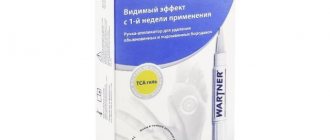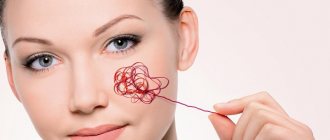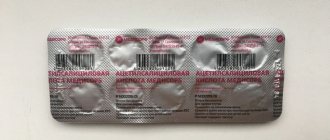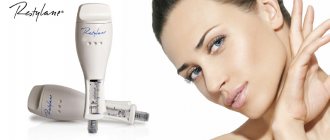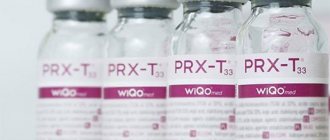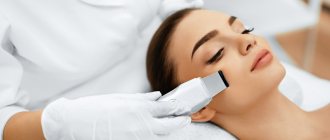Synonyms: phenolic acid, hydroxybenzoic acid, salicylic acid
Packing: four/five-layer paper bags, one layer laminated with polyethylene, net weight up to 25 kg
Salicylic acid is a non-steroidal anti-inflammatory drug from the group of salicylates that has analgesic, antipyretic, and anti-inflammatory properties. In medicine, it is used only externally to dissolve the surface layer of the skin (horny layer) and as a local anesthetic. Numerous side effects may occur when taken orally. For this purpose, a derivative of acetylsalicylic acid (aspirin) is used. Because salicylic acid is absorbed through the skin, medications should not be applied over a large area. Its use as a food preservative is controversial and banned in many countries.
In ancient recipes of folk medicine, a decoction of willow bark has been listed since ancient times as an effective antiseptic and an effective antipyretic. Since ancient times, every warrior knew about this property - a decoction of willow stopped bleeding and healed wounds. This property interested the Italian chemist Raphael Piria, who in 1838 obtained salicylic acid from willow bark and described it.
Before the invention of industrial production technologies, phenolic acid was not widely used; it was produced in small batches and used in laboratory research. The properties of this chemical compound were studied by doctors; the first positive experience was the production of aspirin at the turn of the 19th and 20th centuries, and later the famous Salicylic ointment was invented.
Modern production of the chemical compound is based on heating a mixture of phenol and potassium carbonate in an atmosphere of carbon monoxide (carbon dioxide) at elevated pressure. In Russia it is manufactured according to GOST 624-70, the standard defines two brands containing 99.5% of a chemical compound.
Russia annually imports up to 200 tons of salicylic acid from China, France and Romania. The export volume is insignificant - Poland and Kazakhstan buy phenolic acid in small quantities.
Compound
100 g of alcohol solution contains 1 or 2 grams of salicylic acid. 70% ethanol acts as an additional excipient.
100 g of ointment contains 2 or 3 grams of salicylic acid and up to 100 grams of petroleum jelly.
Release form
The pharmacological agent is available in the form:
- Alcohol solution in glass bottles of 25 or 40 ml
- The ointment is available in an aluminum tube or in dark jars
Properties
Salicylic acid is a white crystalline powder with a light pink tint with the chemical formula C7H6O3, easily soluble in ether, alcohol, chloroform, acetic acid. It dissolves slightly in water and is odorless. The powder melts at a temperature of +159 degrees, is flammable, self-ignites, the dust-air mixture is explosive. It has a spicy, sweet and sour taste. It occurs naturally as derivatives in many plants, including willow.
Salicylic acid is classified as a chemical compound of the 3rd hazard class (according to GOST 12.1.007). Irritating to the skin, mucous membrane of the eyes and upper respiratory tract, easily washed off with running water. When ingested, it affects the liver and has cumulative properties. Production and warehouse premises are equipped with ventilation; during work it is necessary to use protective equipment.
Manufacturer's warranty – 1 year.
Instructions for use
The instructions attached to the pharmaceutical product indicate that it should be used externally; the affected surface should be treated twice a day.
The medication must be applied to the skin using a cotton swab. 5 ml of medicinal solution is enough to treat an area approximately the size of the palm of your hand.
The permissible dosage for adult patients is 2 g per day, for children it is 0.2 g per day.
The treatment course should not last longer than a week.
For painful manifestations in the ear, it is necessary to instill 6 drops of the medicinal solution into the diseased organ 2 times a day.
For acne use 1% Salicylic acid, 2-3% infusion is suitable for people with oily skin. If there are several pimples, the solution must be applied separately to each of them. When there is a lot of acne, it is necessary to wipe the facial skin with a cotton swab dipped in a solution of Salicylic acid. However, treatment with the drug is not recommended for people with dry skin.
The treatment procedure must be carried out until a slight tingling sensation begins in the skin. After the session, you can wash your face with water, this will help neutralize the effect of the acid.
2% Salicylic acid in the form of an ointment is used for:
- ichthyosis
- psoriasis
- seborrhea
- Devergie's disease
If the inflammatory processes progress, it is necessary to dilute the ointment with Vaseline. The procedure can be performed 1-2 times per day.
After the peeling disappears, therapy is continued using other means.
Apply a thin layer of ointment to the damaged surface. After the treated surface is covered with sterile gauze, you can also put a napkin soaked in ointment on the wound.
Before applying a therapeutic bandage, you need to open the blisters and clean the wound of necrotic tissue, do not forget to treat it with an antiseptic.
The dressings must be changed every 2 days until the wound is completely cleared of damaged tissue. The duration of therapy can vary up to 3 weeks.
Salicylic alcohol use. Use of salicylic alcohol
The properties of the product are aimed not only at fighting acne. The acid effectively helps with skin diseases. Eliminates fungus, fights eczema, warts, dermatitis of various origins. Salicylic alcohol is actively used for age spots. To do this, apply the product to a cotton pad and wipe the face where the color of the epidermis is noticed. The product must be washed off, then a caring cream is applied. If you use salicylic acid in the summer, then carry out the procedure before applying a product with a sun protection factor.
The use of salicylic alcohol for acne involves several steps:
Cleanse your face of makeup and impurities. To do this, use makeup remover, foam or facial gel. Then dry your face. Take ear sticks and soak them in salicylic alcohol. Now spot treat your face and body. Periodically change the stick and dip it in alcohol again. When touching the damaged area, hold the cotton wool for a couple of seconds, as if cauterizing the wound.
Do not treat the entire face and apply salicylic alcohol to healthy skin. Otherwise, the epidermis will be injured and burns will appear.
After the treatment, apply moisturizer to the skin. This is a must for those whose epidermis tends to be dry. This way you will remove unpleasant skin tightness and prevent early aging.
After using salicylic acid, the face acquires a reddish tint. This goes away quickly and the skin returns to its previous state. User reviews indicate the appearance of peeling, plus a burning sensation.
You should not use salicylic alcohol regularly. Moreover, after a month of use, you will no longer see amazing results. The skin gets used to the product, adjusts, and the effect is no longer so noticeable. Therefore, follow the treatment course. Depending on the number of rashes, apply salicylic alcohol for 7-14 days. Then take a break for a couple of weeks and repeat the treatment course again.
Interaction
The pharmaceutical agent increases the permeability of the skin to other drugs for external use, thereby enhancing their absorption.
Absorbed salicylic acid provokes negative effects:
- sulfonylurea derivatives
- antidiabetic drugs
- methotrexate
The solution cannot be used in conjunction with Resorcinol, zinc oxide.
Salicylic acid can be purchased without a prescription from your doctor. The medicinal solution can be stored for 3 years, and the ointment for 2 years.
Contraindications
Salicylic acid is contraindicated in case of hypersensitivity to the drug and during pregnancy. It should not be applied to the eyes, mucous membranes, or open wounds, or taken orally as a painkiller. The acid should only be applied to a small area because it is easily absorbed into the bloodstream through the skin. As a precaution, it should not be used in children and adolescents with viral infections due to the risk of Reye's syndrome.
Not recommended for use in cases of renal or hepatic dysfunction.
During pregnancy, a woman should avoid medications containing salicylic acid, because it can harm an unborn baby even when applied topically.
Full precautions can be found in the relevant product information and pharmacological description on the package.
Why is Salicylic acid needed in cosmetology?
Salicylic acid is widely used in cosmetology. After all, it has antibacterial properties and perfectly treats inflammatory skin pathologies. Its use does not cause any irritating effect.
With the help of a pharmaceutical product you can get rid of acne and blackheads. This effect is achieved thanks to the keratolytic properties of the drug. Salicylic acid “removes” old keratinized skin cells well, penetrates deep into the pores and eliminates blockage of the sebaceous glands.
In addition, the medication is used:
- for calluses
- for peeling
- from corns
- for warts
- for cleansing heels
Precautionary measures
Do not apply ointment and solution to:
- mucous membranes
- birthmarks
- pilar warts
- warts located near the genitals and on the face
If the pharmaceutical product accidentally gets on the mucous membranes, the area should be thoroughly rinsed with water.
In the presence of skin pathologies that occur with external lesions, the absorption of the medication is enhanced.
Side effects
Salicylic acid can irritate the skin and mucous membranes, causing redness and burning. Hypersensitivity reactions (salicylate allergy) are possible.
Dyspepsia, nausea, vomiting, diarrhea, gastrointestinal bleeding and gastrointestinal ulceration may occur if this acid is ingested. Overdose is manifested in gastrointestinal complaints, hyperglycemia or hypoglycemia, rash, dizziness, ringing in the ears, visual and hearing disturbances, tremors, confusion, hyperthermia, sweating, hyperventilation, acid-base and electrolyte imbalances, respiratory failure and coma.
Salicylic acid - properties and formula, use for treating acne on the face and hair
The composition of salicylic acid is important for anyone who regularly uses this medication. It helps with many diseases, demonstrating high efficiency. Currently, sapicylic acid is found in most home medicine cabinets.
The drug brings many benefits and costs very little, but you should always remember that it has certain contraindications and side effects. We will talk about this, as well as the properties and features of using this acid, in this article.
What is salicylic acid
In medicine, phenolic or salicylic acid is an antiseptic drug that has keratolytic, anti-inflammatory and antimicrobial effects. In addition, the product rejects and softens the outer layer of skin, exhibiting a peeling effect.
It is often used in dermatology and cosmetology for the treatment of psoriasis, acne, blackheads, as well as for the treatment of wounds with burns.
An alcohol solution of salicylic acid has a low cost, but it effectively combats many skin defects, which is why it is widely popular.
What does it help with?
Acid is added to many medications and has been actively used by doctors for decades. It is used as a separate therapeutic agent or in combination with other drugs to treat:
- psoriasis;
- ichthyosis;
- burns;
- oily seborrhea;
- eczema;
- calluses;
- corns;
- warts;
- versicolor;
- foot hyperhidrosis;
- hair loss;
- dermatitis;
- acne;
- pyoderma;
- other infectious viral skin diseases.
Compound
The components of the anti-inflammatory drug depend on the form of release and the concentration of the drug. The powder contains pure crystals of the active substance without additives. In addition, 1 and 2 percent alcohol solutions are available. Their composition is as follows:
| Active ingredient | , mg |
| salicylic acid | 10/20 |
| Auxiliary Component | Concentration, % |
| ethanol | 70 |
Discovery of a healing remedy
The first to extract salicylic acid was the Italian chemist Rafael Piria, who lived in the 19th century. Later he synthesized it.
Piria was born in the Italian commune of Scilla in 1814. From the age of 15 he studied the basics of medical science in Naples, and then concentrated on chemistry, going to Paris for this. Throughout his career, he taught at universities, including Pisa and Turin.
His contribution to modern science is highly valued today. Piria is the founder of fundamentally new methods of synthesis in organic chemistry. A number of drugs discovered by him made a real revolution in medicine in the 19th century.
An Italian scientist became the first to separate the bitter glycoside found in willow bark, that is, salicin, into two parts.
It was he who managed to establish that it was the acidic component (this was salicylic acid) that had healing properties.
Having isolated it from willow bark, he successfully determined the chemical composition of this substance, and then synthesized it. Officially, the year of discovery of salicylic acid is considered to be 1838. Today its most famous derivative is aspirin.
In fact, this was the first purification of the substance for the subsequent development of aspirin, which Hoffman managed to develop in 1897, achieving acetylation in a stable form of chemically pure salicylic acid.
Piria himself did not live to see this moment. He died in Turin in 1865 at the age of 50.
Release form
The anti-inflammatory drug is available in powder form, which is odorless white crystals. The product dissolves well in water, oil solutions, and alcohol.
The powder is sold in bags of 10, 25, 50 g and has a reasonable price.
The more well-known form of salicylic acid is a 1 or 2 percent alcohol solution, which is packaged in dark glass bottles with a capacity of 10, 25, 40, 100 ml.
Contraindications
Before using a product with an anti-inflammatory effect, you should familiarize yourself with the contraindications of salicylic alcohol. These include the following conditions:
- individual intolerance to the active component;
- children up to 12 months;
- lactation period;
- pregnancy;
- renal failure;
- excessive dry skin.
Source: https://gb4miass74.ru/bolezni/salicilovaya-kislota.html


